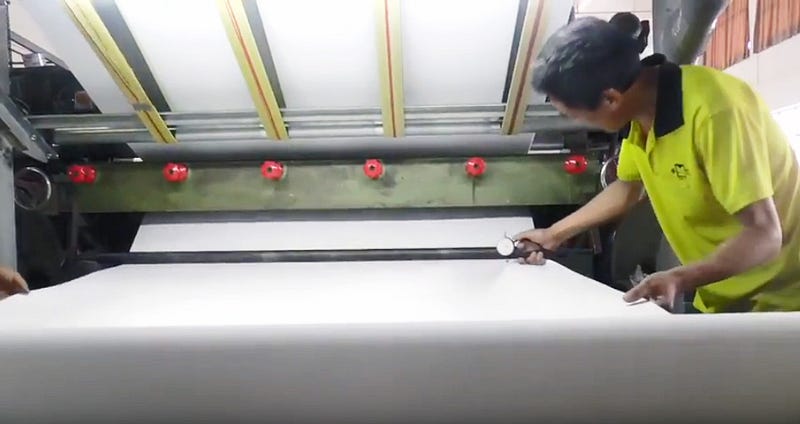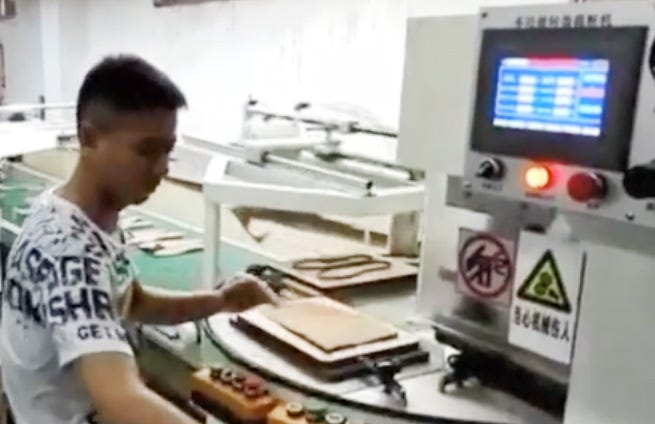The production process of EVA (Ethylene Vinyl Acetate) material is a complex procedure involving several key steps. Each stage, from raw material preparation to the final product, impacts the material’s properties and performance. Understanding this process helps businesses and consumers appreciate the versatility and quality of EVA products.
EVA (Ethylene Vinyl Acetate) is a popular material known for its flexibility, durability, and various applications. The production process of EVA involves multiple stages, each contributing to the final product’s quality and characteristics. This article provides an overview of the key steps involved in the production of EVA material, shedding light on how different factors affect its properties and performance.

1. Raw Material Preparation
The production of EVA material begins with the preparation of raw materials. The primary components used in EVA production are ethylene and vinyl acetate. These raw materials are sourced from petrochemical processes and are mixed in specific ratios to create the desired properties of EVA. The quality and ratio of these raw materials influence the final product’s flexibility, strength, and other characteristics.

2. Polymerization Process
The core of EVA production is the polymerization process, where ethylene and vinyl acetate are combined to form the EVA polymer. This process typically occurs in a high-pressure reactor. During polymerization, the ethylene and vinyl acetate react under controlled conditions to form a polymer chain. The degree of polymerization and the ratio of ethylene to vinyl acetate determine the final material’s properties, such as its flexibility, resilience, and transparency.

3. Compounding
After polymerization, the EVA polymer is subjected to a compounding process. This involves mixing the polymer with various additives to enhance its properties. Additives may include colorants, stabilizers, fillers, and plasticizers. The compounding process ensures that the EVA material has the desired characteristics for its intended application. For example, plasticizers can increase flexibility, while stabilizers can improve the material’s resistance to UV radiation and heat.

4. Extrusion and Molding
Once the EVA material has been compounded, it undergoes extrusion and molding to form the final product. Extrusion involves forcing the EVA material through a die to create sheets, films, or other shapes. The extruded material is then cooled and cut into the desired dimensions. Molding processes, such as compression molding or injection molding, may also be used to produce specific shapes or parts from the EVA material. The choice of molding technique affects the material’s final appearance and performance.

5. Quality Control and Testing
Quality control is a critical stage in the production of EVA material. Various tests are conducted to ensure that the material meets industry standards and specifications. These tests may include checks for thickness, density, tensile strength, and flexibility. Quality control also involves inspecting the final product for any defects or inconsistencies. Rigorous testing ensures that the EVA material is durable, reliable, and suitable for its intended use.
6. Finishing and Packaging
After quality control, the EVA material undergoes finishing processes to enhance its appearance and functionality. This may include surface treatments, such as coating or polishing, to improve texture or provide additional properties. Once finished, the material is packaged for distribution. Packaging ensures that the EVA material is protected during transportation and handling, maintaining its quality until it reaches the end user.
7. Applications and Versatility
EVA material is highly versatile and is used in a wide range of applications, including footwear, sports equipment, packaging, and medical devices. The production process allows for customization of the material to meet specific needs, such as cushioning, impact resistance, or aesthetic requirements. Understanding the production process helps businesses select the right EVA material for their applications, ensuring optimal performance and quality.
Conclusion
The production process of EVA material involves several key stages, from raw material preparation to finishing and packaging. Each step contributes to the material’s final properties and performance, making it essential to understand the process to appreciate the versatility and quality of EVA products. By comprehending the production process, businesses and consumers can make informed decisions about their EVA material choices and ensure that they meet their specific requirements.
FAQ
1. What are the primary components used in the production of EVA material?
The primary components used in the production of EVA material are ethylene and vinyl acetate. These raw materials are mixed in specific ratios to create the desired properties of EVA.
2. How does the polymerization process affect the properties of EVA material?
The polymerization process affects the degree of polymerization and the ratio of ethylene to vinyl acetate, which in turn influences the material’s flexibility, resilience, and transparency.
3. What role do additives play in the production of EVA material?
Additives such as colorants, stabilizers, fillers, and plasticizers are mixed with EVA polymer during the compounding process. These additives enhance the material’s properties, such as flexibility, UV resistance, and heat stability.
